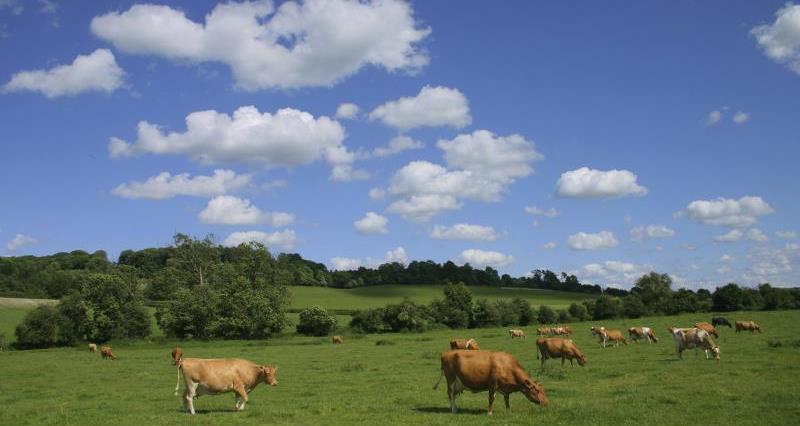What
Graze to maintain an average sward height of 10-12cm throughout the grazing season on fertiliser-free permanent pasture. This should result in a sward with a relatively diverse vegetation structure (at least 20% of the sward below 10cm and at least 20% of the sward above 10cm).
Why
Managing fertiliser-free permanent pasture will quickly increase the wildlife value of grassland while maintaining a good level of agricultural output.
Grazing to a slightly taller sward height rapidly increases the abundance of insects within the sward. The greater variety in vegetation height creates more niches for insects – especially areas of taller vegetation that provide insects with nectar from flowering plants and more time to complete life cycles. Butterflies and grasshoppers especially benefit from taller swards. Yellowhammers and skylarks have also been shown to feed more frequently on grasslands that are leniently grazed.
Individual animal performance tends to increase under a taller sward height (as livestock can forage more selectively) but overall output per hectare tends to decline (due to lower stocking rates). In a trial with growing cattle, total output (kg per hectare) was similar on a taller sward (9-12cm) to a standard grazed pasture (6-9cm) where the taller sward was rotationally grazed with a standard grazed pasture. Total output was 10-15% lower where the taller sward was continuously grazed.
How
- A taller, more varied sward structure can be achieved through various grazing regimes.
- If rotationally grazed, ensure at least 20% of the sward remains above 10cm at the end of each grazing period.
- This measure will be most appropriate with cattle as it is closer to the standard sward heights of cattle (6-9cm) than sheep (4-7cm). However, some of the grazing could come from other livestock, e.g. sheep or horses.
- It is just as easy to graze fields too lightly as too heavily, leading to dense, inaccessible swards that have less value to wildlife and poor grazing quality.
- Ensuring some taller vegetation remains through the winter provides an important refuge for insects to over-winter and complete their lifecycles, e.g. the caterpillars of moths and butterflies.
- Target this on long-term permanent grassland with some diversity of grasses/broad-leaved plants. However, avoid exceptionally flower-rich areas as plant diversity may reduce under such lenient grazing.
- Try to maintain this management in the same field for a few years as the wildlife benefits will build with time. However, if sward quality deteriorates severely, return to standard management and leniently graze elsewhere.
- General grassland topping would destroy the varied vegetation structure that this measure seeks to create. However, if large areas of rejected grass develop, topping could re-create a fine-scale mix of tall/short vegetation.
- Any weed control should be done through targeted means, such as spot-spraying, weed-wiper or topping the problem area. Avoid boom spraying as this would also control broad-leafed plants (such as clovers) which add greatly to the diversity of insects.
- Avoid harrowing and rolling during the breeding season if ground nesting birds such as skylark are present.
